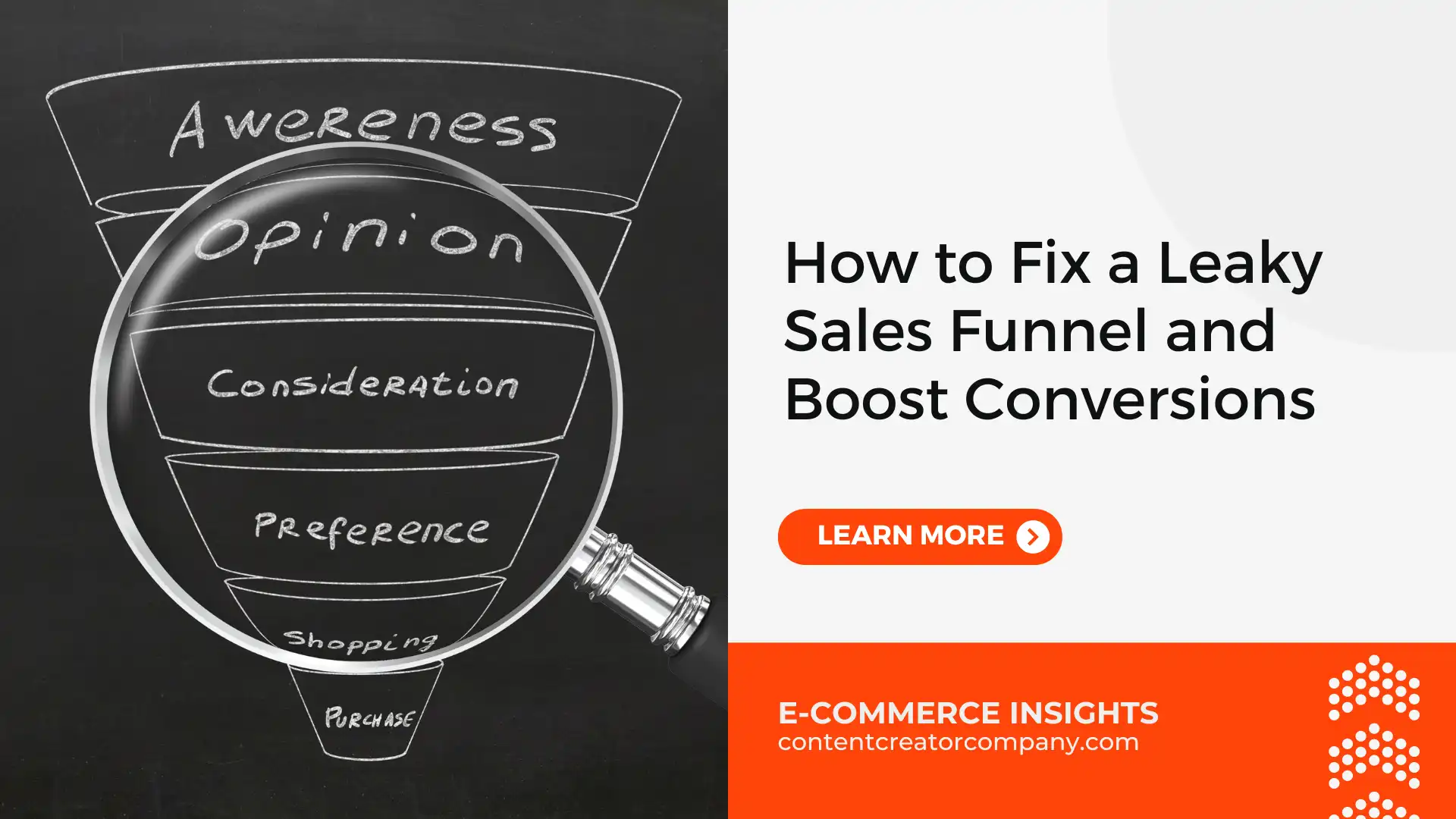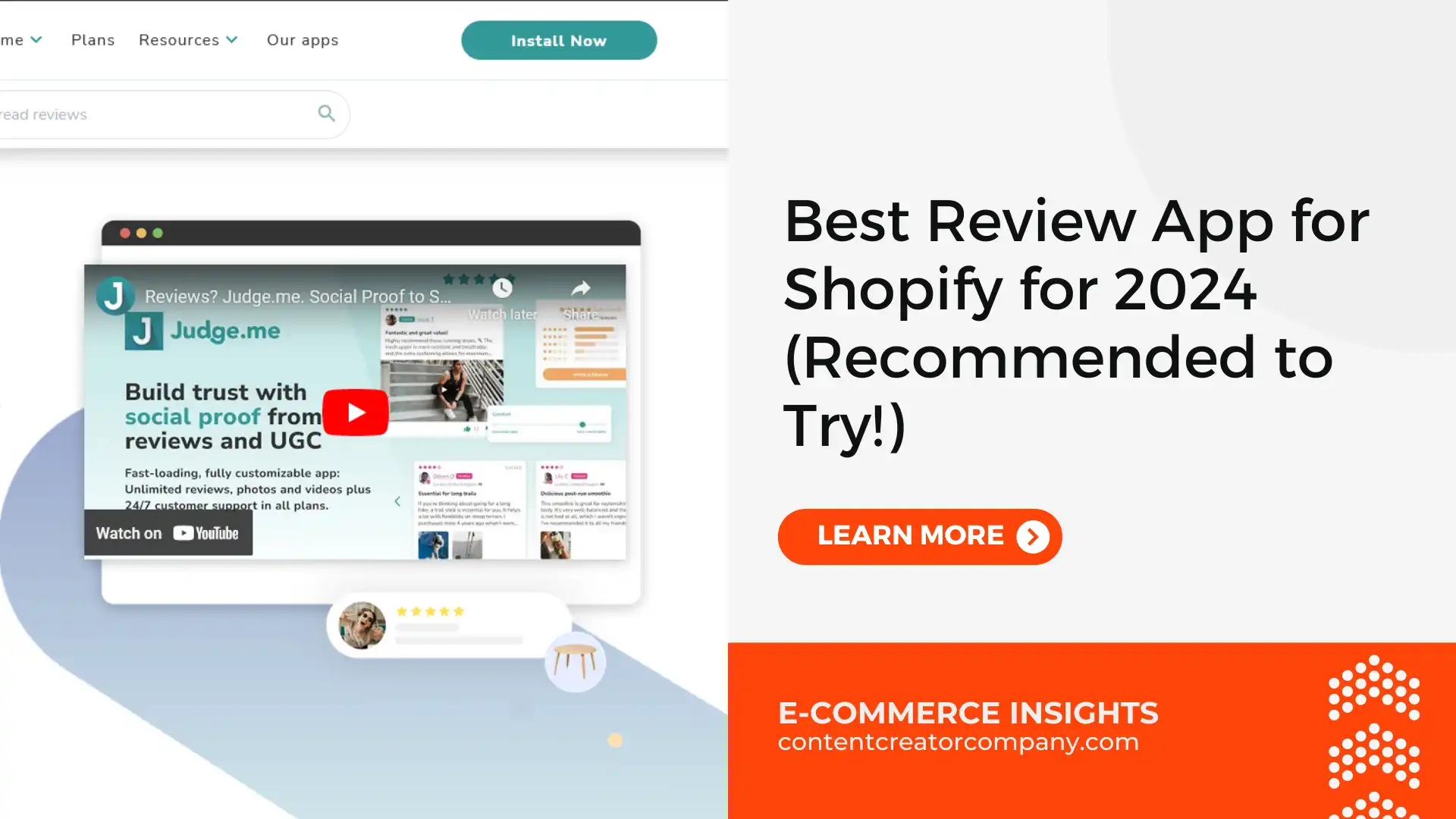
In the competitive landscape of online retail, mastering ecommerce content optimization is crucial for maximizing success and standing out amidst the myriad of offerings.
With consumers increasingly turning to digital platforms for their shopping needs, ensuring that your ecommerce content is not only visible but also compelling is paramount.
In this comprehensive guide, we delve into effective strategies that can elevate your ecommerce game, driving traffic, engagement, and ultimately, conversions.
Table of Contents
What is Ecommerce Content Optimization?
Ecommerce content optimization encompasses a range of techniques aimed at enhancing the visibility, relevance, and appeal of product pages, category descriptions, blog posts, and other content elements on an online store.
At its core, it involves optimizing various aspects of your website and content to rank higher in search engine results, attract qualified traffic, and compel visitors to take desired actions, such as making a purchase or subscribing to a newsletter.
To begin with, conducting thorough keyword research is essential for understanding the language and queries potential customers use when searching for products or services in your niche.
By identifying high-volume, relevant keywords related to your offerings, you can strategically incorporate them into your content, thereby improving its search engine visibility and attracting qualified traffic.
On-Page Optimization Techniques
On-page optimization plays a pivotal role in ecommerce content optimization, as it involves optimizing individual web pages to rank higher and attract more relevant traffic. One of the key aspects of on-page optimization is optimizing product titles, descriptions, and metadata.
Ensuring that these elements are not only descriptive but also include relevant keywords can significantly improve your chances of appearing in search results for relevant queries.
Furthermore, optimizing product images is equally crucial for ecommerce success. High-quality, visually appealing images can enhance the overall user experience and entice visitors to explore your products further.
Additionally, optimizing image alt text with relevant keywords can improve your website’s accessibility and search engine visibility, further boosting organic traffic.
Content Creation and Optimization
In addition to product pages, creating and optimizing content such as blog posts, buying guides, and tutorials can help attract and engage potential customers at different stages of the buyer’s journey.
When crafting content, it’s essential to focus on providing value to your audience by addressing their pain points, answering their questions, and offering actionable insights.
Moreover, optimizing content for search engines by strategically incorporating relevant keywords, optimizing meta tags, and ensuring readability can help improve its visibility and drive organic traffic to your ecommerce site.
Additionally, leveraging internal linking to connect related content can enhance user experience, encourage exploration, and contribute to overall SEO efforts.
Leveraging User-Generated Content
User-generated content, such as product reviews, ratings, and testimonials, can be a powerful tool for ecommerce content optimization. Not only does it provide social proof and build trust with potential customers, but it also serves as valuable content for search engines to index and rank.
Encouraging customers to leave reviews and testimonials by offering incentives or creating a seamless review process can help generate a steady stream of user-generated content.
Moreover, showcasing these testimonials and reviews prominently on product pages can influence purchasing decisions and improve conversion rates.
Mobile Optimization
With an increasing number of consumers shopping on mobile devices, optimizing your ecommerce content for mobile is no longer optional but essential.
Mobile optimization involves ensuring that your website is responsive, loads quickly, and provides a seamless browsing and purchasing experience across various devices and screen sizes.
From optimizing images and videos for faster loading times to implementing mobile-friendly navigation and checkout processes, every aspect of your ecommerce site should be optimized for mobile users.
Failure to do so can result in high bounce rates, lower search engine rankings, and ultimately, lost sales opportunities.
Implementing Structured Data Markup
Structured data markup, such as schema.org markup, provides search engines with additional context about your ecommerce content, helping them better understand its relevance and significance.
By incorporating structured data markup into your product pages, you can enhance their appearance in search engine results pages (SERPs) with rich snippets, such as product ratings, prices, and availability.
Structured data markup can also enable your products to be eligible for inclusion in specialized search features, such as Google’s Rich Results, which can significantly increase their visibility and click-through rates.
Moreover, implementing structured data markup can improve the overall user experience by providing users with more informative and visually appealing search results.
Monitoring and Analyzing Performance
Continuous monitoring and analysis of your ecommerce content performance are essential for identifying areas of improvement, optimizing strategies, and maximizing results.
Utilizing web analytics tools, such as Google Analytics, can provide valuable insights into various metrics, including traffic sources, user behavior, conversion rates, and more.
By closely monitoring key performance indicators (KPIs) and conducting regular A/B tests, you can identify which strategies are delivering the best results and iterate accordingly.
Additionally, staying updated with industry trends, algorithm changes, and competitor strategies can help you stay ahead of the curve and adapt your ecommerce content optimization efforts accordingly.
Strategies for Ecommerce Content Optimization Conclusion
In the ever-evolving world of ecommerce, content optimization remains a critical aspect of driving visibility, engagement, and conversions. By implementing the strategies outlined in this guide, including on-page optimization, content creation, user-generated content, mobile optimization, structured data markup, and performance monitoring, you can position your online store for sustained success in today’s competitive landscape.
Remember, effective ecommerce content optimization is not a one-size-fits-all approach but rather a combination of strategic planning, execution, and continuous refinement.
By prioritizing the needs and preferences of your target audience, staying abreast of industry best practices, and leveraging data-driven insights, you can maximize the impact of your ecommerce content and achieve your business objectives.
In conclusion, mastering ecommerce content optimization is essential for maximizing your online store’s visibility, relevance, and success.
By implementing a holistic approach that encompasses various strategies and techniques, you can enhance the discoverability, engagement, and conversion rates of your ecommerce content, ultimately driving business growth and profitability in today’s competitive digital landscape.
Looking to Maximize Sales and Visibility for Your E-commerce Store?
Our SEO content writing services are the key to unlocking the full potential of your online shop. With our tailored approach to e-commerce content optimization, we’ll ensure that every product description, category page, and blog post is strategically crafted to attract and convert customers.
From keyword-rich titles to persuasive product descriptions, our team will optimize every aspect of your e-commerce content to improve search engine rankings and drive more traffic to your site.
Don’t let your products get lost in the digital marketplace – partner with us today and let’s optimize your e-commerce content for success!





